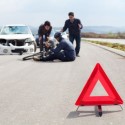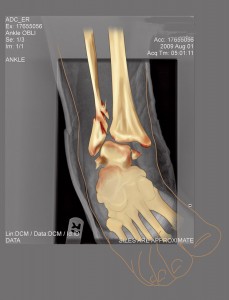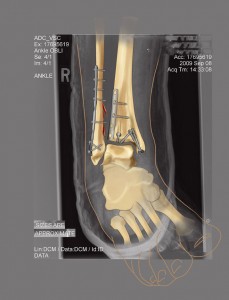Menu

Morgan Smith
Why It Pays to “Visualize an Injury” for Mediation or Trial
 In a personal injury case, attorneys on both sides might focus so much on the issue of liability that they give short shrift to thoroughly understanding the injury itself. This often happens in catastrophic cases where the serious consequences of an injury are undisputed.
In a personal injury case, attorneys on both sides might focus so much on the issue of liability that they give short shrift to thoroughly understanding the injury itself. This often happens in catastrophic cases where the serious consequences of an injury are undisputed.
During the many years in which I handled and tried PI cases, I myself often fell into the trap of spending so much time focused on liability issues that I didn’t fully visualize and grasp the nature of injury itself. I now recognize that this is a mistake and have since become a big fan of what I call “Visualizing the Injury.” Here’s why, and how to do it:
In litigation, it’s one thing to talk about an injury in dry medical terms, and quite a different and more powerful thing to show what actually happened anatomically at the time of injury.
For plaintiff attorneys, the more thoroughly and accurately you can show the mechanisms and effects of the injury, the better off the ultimate result will be after major deductions occur in settlement for weak liability. Above all else, a personal injury case is really about the injury to the person, and the more severe the injury, the greater the base value of the case before deductions for liability issues.
What’s the best way to show the injury? First, consider MRIs and X-rays to be a starting point, but inadequate on their own. I admit that in the past, I sometimes would take nothing more into mediation that an MRI or X-ray and assume the mediator and opposing counsel were sophisticated enough to read them and understand what they mean. But we all know how confusing MRIs and X-rays can be, and by their static nature they can’t illustrate the cause-and-effect sequence of events that transpired at the time of injury.
A much better way to visualize, understand and present an injury is through an animated re-creation like the one below, which is excerpted from an animation my firm created in a trip-and-fall case. The fact that the plaintiff fractured her tibia and fibula due to the incident was not at issue in the litigation, but the value and liability were.
The animation was intended to show in a non-prejudicial or non-argumentative way how the asphalt bump of a parking lot berm caused the plaintiff to roll her ankle and fracture her bones. The animation helped everyone involved with the case better understand how the movement of the plaintiff’s body resulted in such a severe injury.
Our firm created this animation in close consultation with an expert biomechanic who provided the opinion as to the precise body movement to cause this type of injury. We used an anatomically accurate 3D skeleton, which fades into view and allows the observer to visualize what occurred internally at the time of incident.
Additionally, we put together the following medical illustrations to show close-ups of the fractures and the medical hardware to repair them. These illustrations are overlayed on the actual X-ray, providing a foundation for their accuracy. The end result makes it much easier for non-medical specialists to understand the injury and surgical treatment.


Taken together, the evidence is a powerful way to show any mediator, judge or jury the severity of what occurred without prejudice but in an informative manner.
As a postscript, I’d like to note that while this post is directed mainly at plaintiff attorneys, animations and medical illustrations can be of great use to defense attorneys as well, especially if causation is an issue in the case.
Recent Posts
- Proper Digital Discovery, Part IV: Using Drones in Modern Litigation
- Proper Digital Discovery, Part III: Using Digital Imagery in Modern Litigation
- Proper Digital Discovery, Part II: Electronic Measuring Data
- How to Obtain Proper Digital Discovery, Part I: Photography
- California Courts – Latest Updates
